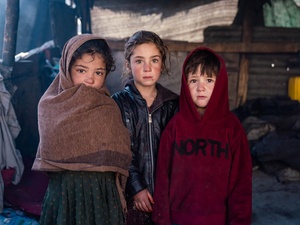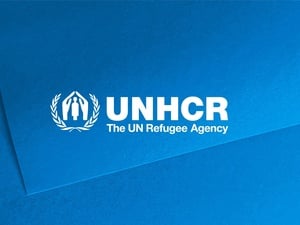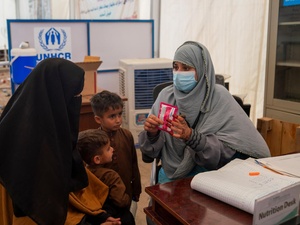Afghanistan: refugee and IDP returns
Afghanistan: refugee and IDP returns
Since the Afghan Interim Afghanistan-UNHCR repatriation operation began on 1 March, more than 566,000 refugees have returned home. Returns from Pakistan hit the half-million mark last weekend. Some 39,000 people have entered from Iran and more than 9,000 have returned from Central Asia. In addition, UNHCR and IOM have assisted the return of more than 160,000 internally displaced Afghans. UNHCR expects to help some 1.2 million people to return home this year - both refugees and internally displaced persons (IDPs).
Among these returnees, some 140,000 people have gone back to Kabul Province over the last two and a half months. Many were refugees who first fled the area when the Taliban took Kabul. These returnees are arriving home with skills, business experience and money to invest, while others are seeking jobs in the Interim Administration and other agencies. Many people are head for Kabul because it happens to be the safest city in the country, in part because of the deployment of experienced Afghan police and the presence of the International Security Assistance Force.
Yesterday, UNHCR started helping homewards some of the thousands of internally displaced Afghans encamped at the southern border town of Spin Boldak. The first day saw some 600 people return. So far today, some 150 people have opted to leave the squalid border site for their homes elsewhere in Kandahar District. Since September, more than 40,000 IDPs have been living in squalid conditions in five camps in and around Spin Boldak, forced to flee their homes due to drought and war.
As with our other return programmes, we are advising the Afghans in Spin Boldak on conditions back in their home areas, and they receive the same transport allowance that goes to returning refugees. They also receive a UNHCR family kit and three months of WFP food aid.
Just opposite Spin Boldak, at the makeshift Chaman border site inside Pakistan, UNHCR continues to provide counselling to Afghans about return options and repatriation assistance. Today, some 150 people voluntarily returned to Afghanistan from the Chaman site, pushing the number of refugee returns from the makeshift encampment to more than 1,500 over recent weeks. UNHCR tomorrow plans to step up the voluntary return initiative, focusing on some 40,000 people stuck at Chaman. We also continue to ask Pakistan to permit those refugees among the Afghans who cannot return home to be moved to proper refugee camps in the region.
Among the up to 80,000 Afghans encamped on either side of the border south-east of Kandahar are many Pashtuns who have fled their homes in northern Afghanistan. Some cite harassment and ethnic persecution, while others are impoverished pastoral Kuchi tribesmen who lost everything because of the devastating drought. We are working with both the Afghan and the Pakistan authorities to find an appropriate solution for these people.









